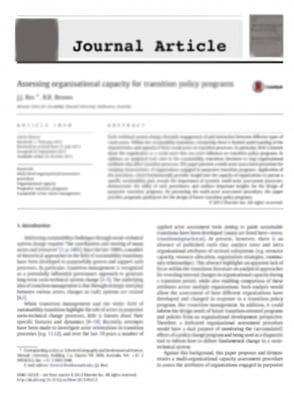Stream experiments at the catchment scale: the challenges and rewards of collaborating with community and government to push policy boundaries.
Abstract
As large areas of global landscapes become increasingly urbanized, the world’s rivers and streams degrade, with resultant alarming losses of biodiversity and capacity to provide ecosystem services (Dudgeon et al. 2006). This widespread degradation has spurred large investments in urban stream restoration programs that usually involve increasing in-stream habitat complexity or replanting riparian vegetation (Bernhardt et al. 2005). This approach is a fundamental mismatch with the scale and cause of such degradation: alteration of land cover and drainage pathways across catchments (Bernhardt and Palmer 2011). Assessment of the ecological effectiveness of such reach-scale stream modification projects has been rare (Palmer et al. 2005), but recent studies suggest that resulting improvements in in-stream ecological structure and function are rare and, at best, marginal (Louhi et al. 2011, Violin et al. 2011). Effective restoration probably requires actions at the catchment-scale to directly redress degrading processes.
The dispersed, land-based causes of stream degradation present a major challenge for stream ecologists who seek to understand the interactions of stream ecosystems with their catchments. To achieve such understanding, stream ecologists must work with the human community and natural resource managers who inhabit and work in the socioecological systems that constitute catchments (Collins et al. 2010). Projects aiming to achieve measurable restoration of stream ecosystems through catchment-scale actions are rare, particularly within an experimental framework. Catchment-scale experimentation requires collaboration among research disciplines and with a diverse range of actors in socioecological systems.
In this cluster of papers, we report on a catchment-scale stream restoration experiment in Melbourne, Australia. The project was instigated by a stream ecologist (CJW) and a hydrologist (TDF). The task of garnering support for the project from funders, policy makers, stream managers, urban land managers, and the community of the experimental catchment has spanned a decade and has taken us well outside the comforts of our disciplines.
Our experiences are no doubt unique in many ways, but we report here the approaches taken, mistakes made, and lessons learned to inform the future catchment-scale studies that are required to arrest the global decline of the world’s rivers. We begin with a paper outlining the rationale, experimental design, history of the project, and perspectives on our relationships and interactions with the diverse group of people involved in the project (Walsh et al. 2015). The following 3 papers in the cluster present project reviews from the perspective of 3 important collaborators: the catchment community (Bos and Brown 2015); the local government authorities who regulate, implement, and manage the drainage infrastructure of the catchment (Burns et al. 2015); and the regional waterway management authority that was the primary funder of the project (Prosser et al. 2015). Each of these papers comes from a social science discipline that is unusual for Freshwater Science, but we think this disciplinary perspective is necessary to examine the important social dimensions of undertaking manipulative experiments in socioecological systems.
